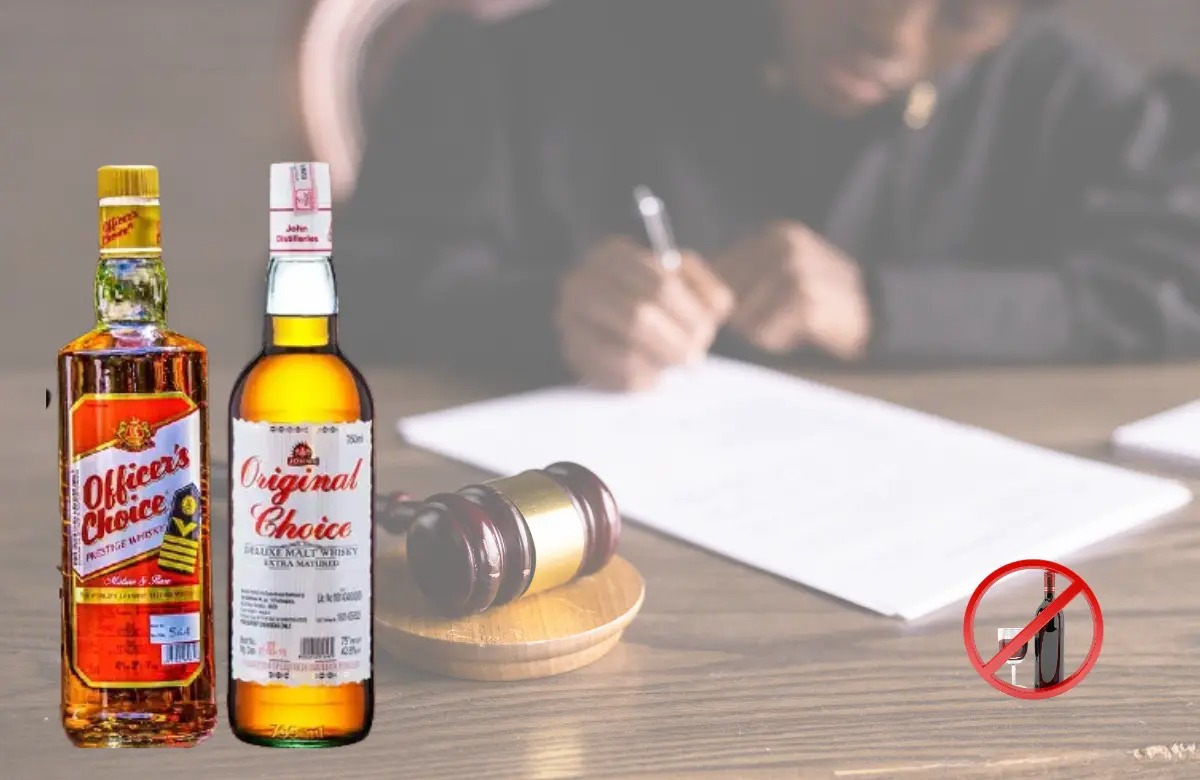G. Rajasekharan, J.@mdashThe conviction for murder and sentence of imprisonment for life are challenged in this Criminal appeal by the sole accused.
2. Inside a toddy shop when the Appellant was consuming toddy deceased Podian came humming a song. The Appellant expressed his displeasure by asking "why can''t you come without singing"? Naturally the deceased questioned the Appellant''s authority to interfere with his freedom to hum a song, and asked what he could do. The Appellant replied that he will be presently dealt with. The quarrel was pacified by the salesman in the toddy shop. Deceased Podiyan walked out and reached the road. The Appellant after finishing his drinks hurriedly followed the deceased to the road asking him to stop. From behind the deceased was caught hold of by the Appellant and taking M.O. 1 dagger the Appellant stabbed Podiyan on his left shoulder causing a penetrating injury 6.5x2.5 cms, which entered into the chest cavity through the second intercostal space severing the brachial plexus, subcalvian artery and piercing the upper lobe of the left lung. Minimum depth of the wound was 12 cms. That is what the occular and medical evidence show. The medical officer said that the injury was sufficient in the ordinary course of nature to cause death. Death was almost instantaneous.
3. The motive alleged is prveious enmity consequent on a quarrel some six days ago in which deceased Podiyan assaulted the Appellant. This fact was spoken to by P.W. 6 the widow of the deceased. The learned Sessions Judge chose not to accept her version for want of corroboration from independent source, and also for the reason that the motive is not relevant, when there is direct evidence regarding the occurrence. The deceased and the Appellant belonged to different political parties.
4. P.Ws 1 to 5 are the occurrence witnesses. Among them, P.W. 3. turned hostile. P.Ws 1, 2, 4 and 5 fully support the prosecution case and their versions tally with the medical evidence. P.W. 1 is related to the deceased and P.W. 2 was an accused in a case in which the Appellant was the de facto complainant. He was also a co-accused with the deceased in a case. It cannot be disputed that P.Ws. 1 and 2 were in the toddy shop. P.W. 4 also was a co-accused with the deceased in a case. The objection against P.W. 5 is that himself and the deceased are Marxists while the Appellant belongs to Anr. political party.
5. Their presence at the scene of occurrence is not disputed. The Appellant has a further complaint that the prosecution is guilty of suppresssing evidence since one Lakshmanan, admittedly an eye witness, was not examined and the explanation brought out by the investigating officer that he was not available is not acceptable. It may be noted that the prosecution is not expected to examine all the occurrence witnesses even if they are available, Suppression of the evidence can he successfully alleged only when an item of evidence necessary for unfolding the true state of affairs, was deliberately withheld some ulterior motive.
6. When a crime is committed in a brothel at an odd hour only the prostitutes and their customers will be available as witnesses. The incident inside a liquor shop late in the night could be seen only by the drunkards and persons connected with the trade. Their evidence cannot be rejected for that reason alone on the basis of interestedness or enmity. What they say will have to be tested on the touch stone of credibility. There cannot be any legal presumption that what a related, interested or inimical witness or a drunkard says has to be rejected as untrue. The maximum that could be said in such circumstances is that utmost care has to be taken before their versions are accepted by the court. P.Ws. 1, 2, 4 and 5 could successfully stand such a stiff scrutiny. When the medical evidence tally with the evidence of these witnesses the evidence of the witnesses gain further support.
7. M.O. 1 is a lethal weapon which normally an ordinary person cannot be expected to carry with him. We have seen the weapon and are of opinion that ordinarily such a weapon will be carried only by a person having criminal propensities. The weapon was identified by the occurrence witnesses as the weapon used by the Appellant. That was recovered on information given by the Appellant to the investigating officer from the place of hiding exclusively known to the Appellant alone. The counsel urged that the hiding place was a bush near a road and so it was an open place and the evidence relating to the recovery is therefore unacceptable u/s 27 of the Indian Evidence Act.
8. It is not the openness of the place or nearness to an open place that matters. Even in an open place an object could be concealed with the knowledge of concealment exclusively remaining with the author. If a weapon is kept concealed in a bush by the side of a road it cannot be said to be an open place even if it is accessible to all and sundry, so long as the concealment was known only to the accused. So also, the fact that the witnesses turned hostile leaving, the uncorroborated testimony of the investigating officer alone to be acted upon by the court, cannot weaken the prosecution case so long as the evidence of the investigating officer is found acceptable. if the uncorroborated version of the investigating officer that there was the information from the accused and as a direct consequence of that information the incriminating object was recovered is found unblemished it will certainly be acceptable. There is no rule of law or rule of caution or prudence, which has matured into a rule of law that such evidence needs corroboration.
9. When confronted with these inconvenient, factual and legal positions the attempt of the counsel for the Appellant was to take the occurrence outside the region Section 300 I.P.C. and bring it u/s 299 I.P.C. to attract the second part of Section 304 I.P.C. He cited the decisions reported in
10. The quarrel which led to the incident was itself provoked by the Appellant without any justifiable reason. At the intervention of the salesman that quarrel was pacified and both were separated. The deceased went out from the toddy shop and he reached the road on his way home. It was then that the Appellant followed him armed with a deadly weapon. The Appellant announced his intention even earlier when there was the wordy quarrel in the toddy shop. On the road the Appellant asked the deceased to stop but the latter was proceeding. The Appellant caught up with him and then taking out the knife stabbed him with great thurst. We have already adverted to the nature of the injury caused by that stab.
The evidence establish that with a dangerous weapon the injury was deliberately caused on a vital part of the body with great force. The intention to inflict that particular injury in a pre-meditated and calculated manner is quite clear. The stab was not at the spur of the moment in a quarrel. The quarrel was pacified and the deceased went away. There was a time lag which was certainly sufficient for the appellent to make up his mind, particularly in the background of the earlier quarrel between the two and the rival political allegiance.
11. Second part of Section 304 I.P.C. will be attracted only when the act was done with the knowledge that death is likely and not with the intention to cause death or such bodily injury as is likely to cause death.
12. Justice Vivian Bose in his landmark decision, in
13. For an offence to come under thirdly of Section 300 I.P.C. firstly it must be established objectively that a bodily injury was caused. The nature of the injury is to be proved. Then it must be shown that there was the intention to inflict that particular injury. In other words it must be proved that the injury was not accidental or unintentional or it was not that some other kind of injury was intended. Once these elements are proved, the enquiry proceeds further and it must be proved fourthly that the injury of the type described made up of the three elements set out above is sufficient in the ordinary course if nature to cause death. When these elements are proved the offence is one falling under thirdly of Section 300 I.P.C. It does not matter whether there was no intention to cause death or even to cause an injury sufficient to cause death in the ordinary course of nature. It is enough that the intention to cause that particular injury is made out. when there is no evidence or explanation why the accused thrust a knife to cause such an injury it would be perverse to conclude that he did not intend to inflict the injury he caused.
14. Intention is a question of fact and not of law. The seriousness of the injury is different from the intention to inflict that injury. In a given case the enquiry may be linked up with the seriousness of the injury. But the question whether the accused knew its seriousness or intended serious consequence is not relevant. The question so far as the intention is concerned is not whether he intended to kill or to inflict an injury of a particular degree but whether he intended to inflict that particular injury in question.
15. What is to be proved is only the intention to cause that injury and if that injury is of the type covered by thirdly of Section 300 I.P.C. the test is satisfied. Only one blow was dealt is also of the mitigating effect in such circumstances.
16. Ordinarily and generally, when the injury is proved the intention to cause it will be presumed unless the evidence or circumstances warrant a different conclusion. Thus, in short, for the application of Clause 3 of Section 300 it need only be established (i) that an injury was caused (ii) that it was sufficient in the ordinary course of nature to cause death and (iii) there was an intention to cause the very injury and not some other injury and that it was not accidental or unintentional.
17. All the tests are satisfied in the case at hand. There was a previous quarrel between the accused and the deceased. In the toddy shop the accused started the wordy quarrel without any cause offering the provocation. Both were separated and pacified by the salesman in the toddy shop. The deceased went out and was going his way. Hurriedly the accused finished his drinks and followed the deceased. On the way the deceased was called by the accused to stop. But the former proceeded. The accused caught up with the deceased and catching hold of him inflicted the injury on a vital part of the body with a dangerous and deadly weapon. The nature of the injury according to the medical evidence is that, in the ordinary course of nature, it was sufficient to cause deaths the details have already been adverted to. The deceased actually met with an instantaneous death. There was time for the accused to make up his mind and his conduct in finishing the drinks hurriedly and following the deceased and without anything more inflicting the injury with great thrust with a deadly weapon certainly justifies the inference that the accused intended that particular injury to be caused to the deceased. Thus, the offence falls squarely under 3rd part of Section 330 I.P.C. which is murder punishable u/s 302 I.P.C. The conviction and sentence awarded by the Sessions Judge does not call for any interference, (the sentence awarded is lesser of the two alternatives.)
In the result, the conviction and sentence are confirmed and the appeal is dismissed.

